Since back passes are not an option during a goal clearance, it is important to easily penetrate the opponent’s half & make effective use of throws.
In this article, we explain the goal clearance shown in the video below, which is widely used and can quickly penetrate the opponent’s half and directly lead to a goal.
Throws from the Goleiro
Three Types of Throws
For a successful clearance, the opening created by the Goleiro’s throw is extremely important.
Goleiro throws can be broadly divided into the following three types.
- Under throw
- Side throw
- Over throw
If these three types don’t immediately ring a bell, please watch the following video.
While passes to the first row (own half) can generally be made with an under throw, for passes to the pivo or into the space behind, instead of mindlessly resorting to an over throw, a side throw is effective if the passing lane is completely open.
Although a side throw is easier to trap, it carries a higher risk of interception, so it is important to use each type appropriately.
Throws That Deceive the Opponent (No-look Throw)
If an opposing defender, by watching the Goleiro’s gaze, anticipates where the pass is likely to go and blocks that space, taking advantage of the situation by throwing to the opposite side can allow a teammate to receive the ball more freely.
Initial Setup
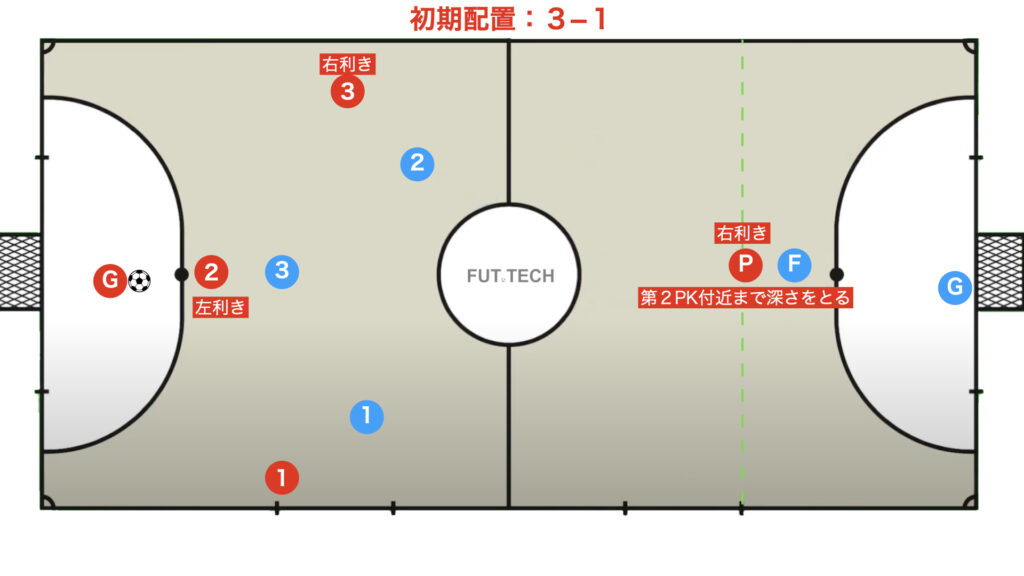
The initial setup is the orthodox 3-1, but it is important to set up quickly with a clear idea of who to position where.
- Place the pivo deep, near the 2nd penalty line, positioned centrally.
- For the pivo, assign an ala on the side opposite his strong foot in the initial setup, using a player whose strong foot is the opposite.
- For the fixo, position a player whose strong foot is opposite to that of the pivo.
Opening
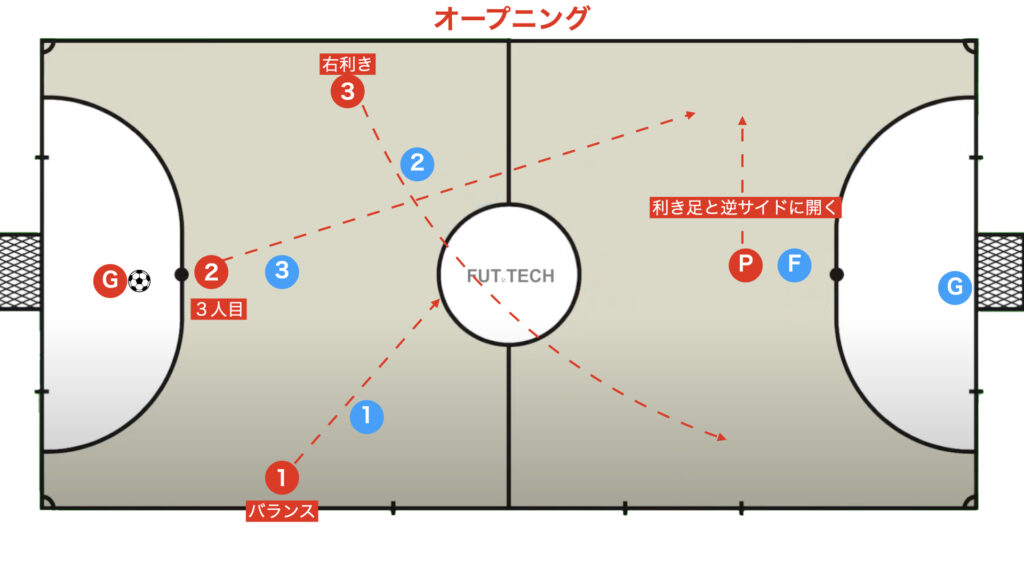
- The pivo opens up to the side opposite his strong foot.
- Red No.3 runs into the space opened by the pivo (Ala Cut).
- Fixo gets involved in the attack as the third FP (supporting the pivo or for rebounds).
- Red No.1 maintains balance.
Option 1: Utilizing the Space Opened by the Pivo
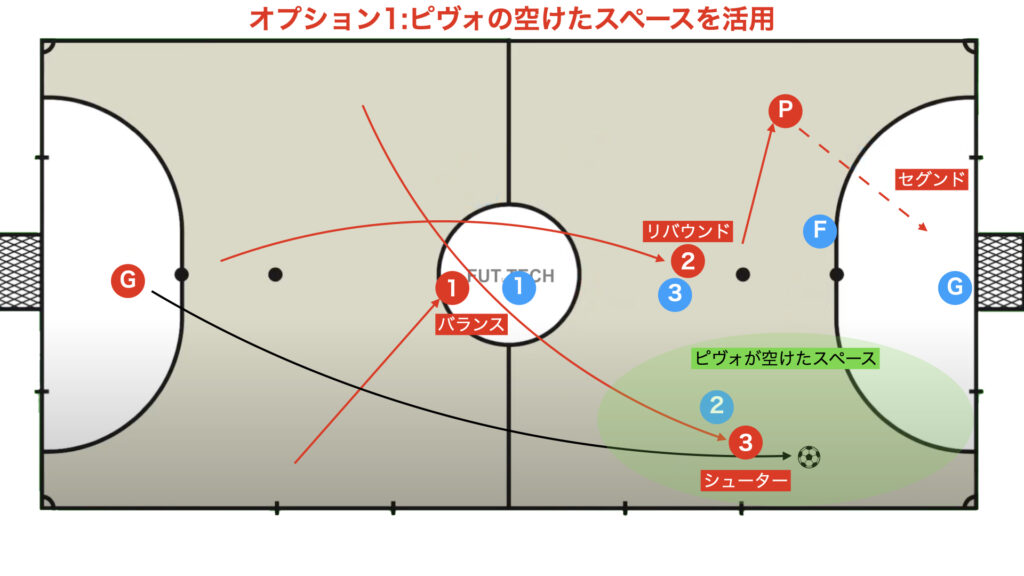
- Red No.3 receives the ball from behind and acts as the shooter.
- The pivo becomes the segundo.
- Red No.2 goes for the rebound.
- Red No.1 maintains balance around the center circle.
At this moment, it is crucial that the Goleiro throws a ball that is easy for the FP to trap, ideally with a slight inside spin.
Option 2: Utilizing the Pivo (Passing to the Pivo and L)
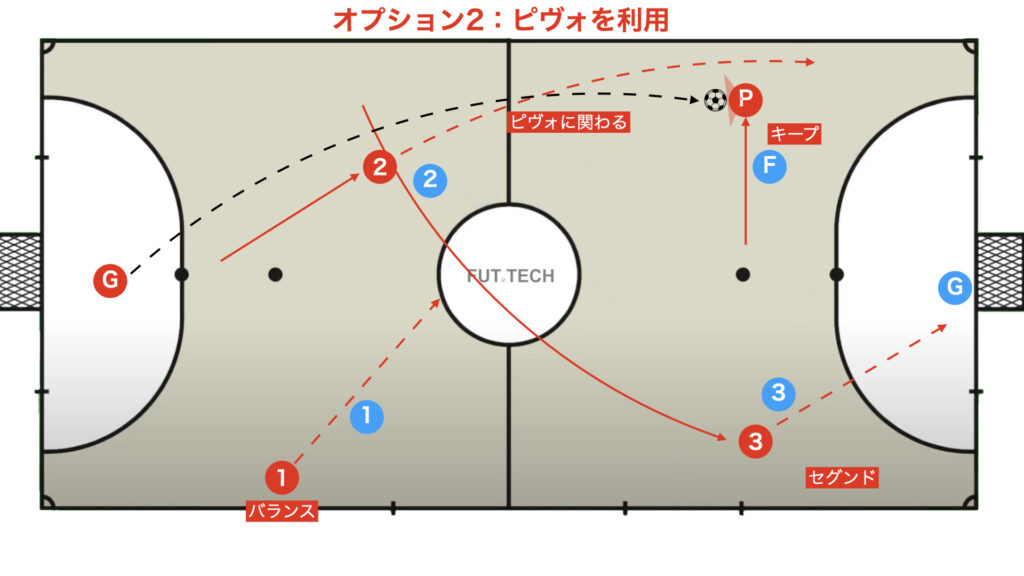
- The pivo receives the ball on the side, holds it, and if possible, reverses direction.
- Red No.3 becomes the segundo.
- Red No.2 gets involved with the pivo (dropping, overlapping, blocking).
- Red No.1 maintains balance.
The tactic known as “L,” which is famous for attacks utilizing the pivo, has the same aim and system.
Option 3: Backdoor (Fake)
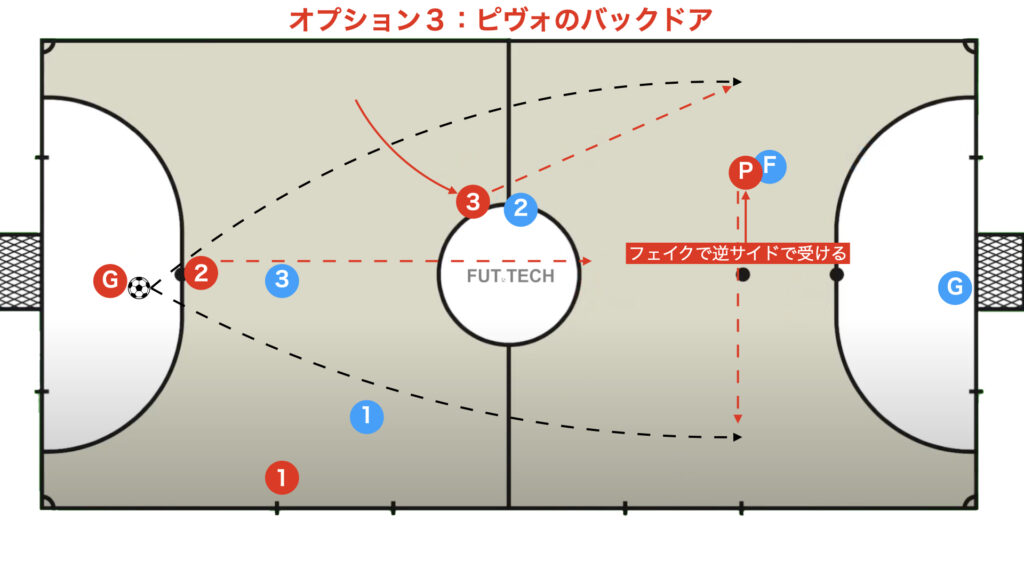
- The pivo feints by appearing to receive on the side opposite his strong foot, but actually receives on his strong foot side.
- Red No.3 runs into the space opened by the pivo with an Ala Cut feint.
- Red No.2 goes for the rebound.
- Red No.1 maintains balance.
The subsequent attacking variations are similar to Options 1 and 2, so they are omitted.
Summary
How did you find it?
Rather than rigidly selecting an option by its number, it is recommended to choose flexibly based on the opponent’s defensive situation.
Teams that tend to be caught in the opponent’s front play during clearances and struggle to avoid them are strongly encouraged to incorporate at least one designed play into their strategy.
Thank you very much for reading this article to the end.
If you found this article useful, please consider sharing it using the social media share buttons above.
We regularly share valuable insights on futsal tactics on Twitter, so if you haven’t followed us yet, we’d appreciate your support!
We are committed to raising the level of futsal in Japan by sharing high-quality information through discussions with individuals who have coaching experience in the F.League and overseas.
If you have any questions or notice any mistakes, feel free to leave a comment below.
We update our articles regularly, so if you’d like to keep reading, please bookmark our site or search for “FutTech”!